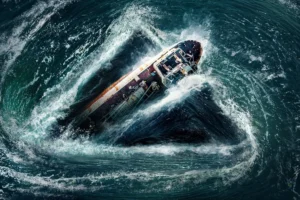
There is hardly a person in the world who hasn’t heard of the Bermuda Triangle—a mysterious stretch of the Atlantic Ocean where, for decades, ships and aircraft have vanished without explanation. This area has become a symbol of the inexplicable, a battleground between scientists and fans of the mystical, and an endless source of legends that still captivate travellers and researchers.
Despite modern technology, satellite navigation and research missions, the Bermuda Triangle phenomenon remains one of the planet’s most famous unsolved mysteries. Each new accident or disappearance within its bounds only fuels interest, prompting scientists and the military to keep searching for answers.
A brief history of the enigma
The first reports of anomalies in the Bermuda Triangle area appeared as early as the 17th century, when seafarers heading from Europe to the New World described unusual atmospheric phenomena, thick fog and compass “disappearances”. The triangle gained real notoriety in the 20th century as cases of ships vanishing without a trace became more frequent. The story of “Flight 19” — five American torpedo bombers that disappeared during a training mission in 1945 — was especially sensational.
After that incident the region drew the close attention of global media, the military and the scientific community. Numerous studies, books and documentaries sought to uncover the mystery of the Bermuda Triangle—from scientific theories to fantastical versions involving underwater bases, time portals or extraterrestrial activity.
Where is the Bermuda Triangle?
If you connect three points on the map—Miami (USA), Puerto Rico and the Bermuda Islands—you get a geometric shape, a triangle covering roughly 4 million square kilometres. It is within these boundaries that most recorded ship and aircraft disappearances have occurred. Despite the many notorious incidents, this region is still heavily used by civil, cargo and military transport, as it lies on strategically important maritime and aviation routes.
Every pilot and captain crossing the area is well aware of the potential risks. Yet, due to heavy traffic, it is impossible to avoid the region entirely. Thousands of ships and flights pass through the Bermuda Triangle every year, so most mariners simply hope their journey will end without incident.
Why does this place inspire fear and fascination?
The human mind is drawn to mystery. A mix of natural phenomena—dense fog, sudden storms, strong currents and magnetic deviations—creates an uneasy atmosphere. Add legends of vanishing vessels, strange signals from the ocean and conflicting eyewitness accounts, and a true myth is born. That is why the Bermuda Triangle has become not only a scientific puzzle but also a cultural phenomenon that continues to fire the imagination of millions.
- The zone covers part of the Atlantic Ocean between the Bermuda Islands, Puerto Rico and Florida;
- Hundreds of transatlantic routes cross it every year;
- Over the past hundred years, more than 100 incidents with no clear explanation have been recorded;
- Near the triangle flows the Gulf Stream—a powerful ocean current that creates unstable weather conditions.
Despite the fear of the unknown, the Bermuda Triangle remains a magnet for researchers, travellers and writers. Its legend lives on, blending science, mystique and the enduring mystery of the ocean.
Where is the Bermuda Triangle and why is it called that?
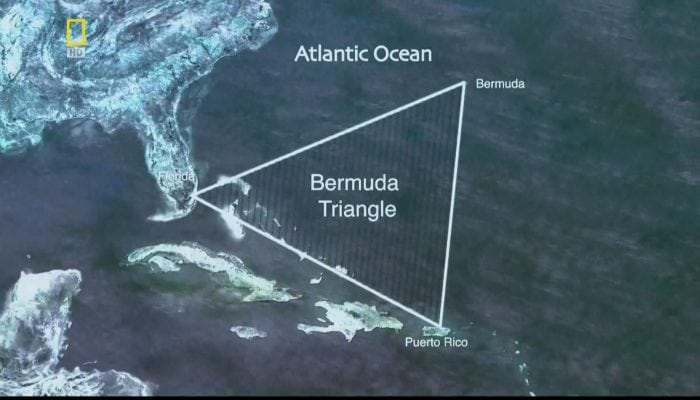
The Bermuda Triangle gets its name from its distinctive geometric shape. Draw imaginary lines between three key points—Miami (Florida), the Bermuda Islands and Puerto Rico—and an almost perfect triangle appears, with vertices that outline the boundaries of this mysterious zone in the Atlantic Ocean.
This area spans more than 4 million square kilometres of ocean, making it one of the largest and most famous anomalous zones on the planet. Despite its scale, no international body has defined official borders for the “triangle”, so exact limits depend on the interpretations of researchers, mariners and scientists.
Geographical coordinates of the Bermuda Triangle
Traditionally, the coordinates of the anomalous zone are taken as:
- Miami (Florida, USA) — 25° N, 80° W;
- Bermuda Islands — 32° N, 64° W;
- San Juan (Puerto Rico) — 18° N, 66° W.
Connect these three points and you get an isosceles triangle stretching thousands of kilometres across the open ocean. It is within this space that most documented cases of ships and aircraft disappearing have been concentrated.
The Atlantic Ocean — a cradle of natural anomalies
It is important to remember that the Atlantic Ocean is an extremely dynamic ecosystem. The powerful Gulf Stream current flows here, influencing water temperatures, producing dense fog and sharp drops in atmospheric pressure. These factors can explain many of the “mysterious” events attributed to the Bermuda Triangle.
Add to this deep-sea trenches, submarine volcanoes and frequent storm fronts—all of which make the region challenging and hazardous for navigation. In ancient times sailors spoke of “glowing waves”, strange magnetic glitches and rapidly changing weather—observations that later fed legends about anomalous phenomena.
Maps and modern research of the region
On modern satellite imagery, the map of the Bermuda Triangle looks like part of a busy shipping corridor. It is not marked as a special warning area, as there are no legal or maritime bans on crossing it. Nevertheless, history preserves numerous documents, reports and coordinates of vessels that disappeared without a trace right here.
In the 21st century interest in the area has not waned—in fact, modern oceanographic missions regularly monitor the atmosphere, magnetic fields and ocean currents within the triangle. Some have already confirmed that the anomalies have entirely natural origins, linked to weather and geological factors.
How did the name “Bermuda Triangle” appear?
The term first appeared in 1964 in the magazine “Argosy”, when writer Vincent Gaddis published the article “The Deadly Bermuda Triangle”. In it he systematised stories of ships and aircraft disappearing near Bermuda, dubbing the area a “zone of death”. Since then the term “Bermuda Triangle” has entered global culture as a synonym for mysterious events at sea.
Later, other researchers — among them Charles Berlitz, John Spencer and Lawrence David Kusche — actively studied the phenomenon, publishing both scientific and popular explanations. Their works shaped today’s perception of the mystery of the Bermuda Triangle—balanced between science, myth and the unknown.
Despite its mystical reputation, the Bermuda Triangle is not a prohibited or officially dangerous zone. It is an ordinary part of the Atlantic where natural forces, combined with human error and technical failure, sometimes create dramatic events that evolve into legend.
Mysterious disappearances: a scientific explanation of the Bermuda Triangle phenomenon

The Bermuda Triangle has become a byword for maritime and aviation disasters, yet most researchers are convinced the explanations are entirely scientific. Decades of evidence suggest that most incidents in this region are driven by natural processes, weather conditions or human error. Today, scientists tend to focus on several leading hypotheses that logically explain these disappearances in the Atlantic Ocean.
1. Methane releases from the ocean floor
One of the most discussed theories, supported by oceanographic observations, involves methane emissions. Deposits of methane hydrates accumulate in the seabed and can be suddenly released due to temperature shifts or seismic activity. Massive gas bubbles rising from the depths reduce the density of the water, causing a vessel to lose buoyancy and plunge rapidly beneath the surface.
How does this affect aircraft?
Studies indicate that during large-scale gas releases, methane can rise into the atmosphere. In such cases the air becomes less dense, which adversely affects jet engines. Some air crashes over the Bermuda Triangle are hypothesised to have been triggered by precisely these natural processes.
- Methane lowers water density — a ship loses stability and sinks;
- Gas entering the air can lead to engine explosions;
- Emissions may be accompanied by electromagnetic disturbances that affect navigation instruments.
2. The Gulf Stream and weather-related disasters
The Gulf Stream is a powerful oceanic flow that plays a key role in Atlantic climate patterns. It creates sharp temperature contrasts, dense fogs and unpredictable hurricanes. Many accidents within the Bermuda Triangle occurred during sudden weather changes, when vessels were caught in storms or lost orientation due to poor visibility.
The impact of magnetic deviations
Magnetic field anomalies are recorded in the Bermuda area and can distort compass readings. Pilots and captains have reported instruments showing the wrong course and navigation systems temporarily failing. However, modern NASA research confirms this is a natural phenomenon caused by the Earth’s magnetic flows in the region.
3. Infrasound and the psychological factor
Another scientific hypothesis concerns the effects of infrasound waves—very low-frequency sounds beyond human hearing. They can arise from atmospheric oscillations during hurricanes or from seismic activity on the ocean floor. It has been shown that infrasound can induce disorientation, panic and even hallucinations. This may explain cases where crews abandoned vessels without obvious cause.
Many experts believe psychological pressure and fear of the “anomalous zone” also play a part. Mariners familiar with legends of Bermuda Triangle disappearances might overreact to any instrument deviation, leading to fatal decisions under stress.
4. Human factors and technical failures
We should not discount navigational errors, crew fatigue and equipment defects. In most cases where wreckage was found, investigations pointed to ordinary technical malfunctions or incorrect crew actions. Yet the topic’s aura of mystery meant each event was quickly attributed to a “curse of the Bermuda Triangle”.
5. Contemporary scientific research
In the 21st century, disappearances in the Bermuda Triangle are studied using satellite systems, underwater drones and climate models. Specialists from NOAA (the US National Oceanic and Atmospheric Administration) have confirmed that frequent accidents are linked to a combination of weather and technical factors, not to supernatural forces.
Cambridge researchers have also examined the phenomenon of “rogue waves”—rare oceanic events over 30 metres high that can arise suddenly during storms. Such waves are capable of overwhelming even large ships, explaining many of the “mysterious” cases within the triangle.
“The Bermuda Triangle is not a mystical place but a complex natural zone with unique climatic and geological conditions,” notes an NOAA report.
Overall, the scientific evidence indicates that the Bermuda Triangle is not a source of supernatural power. It is a complex natural region where ocean currents, atmospheric phenomena and human factors intersect—and it is their interaction that has spawned one of modernity’s most enduring legends.
The mystery of the Bermuda Triangle: myths, facts and a modern perspective
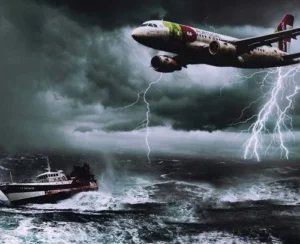
Despite hundreds of studies, publications and TV programmes, the mystery of the Bermuda Triangle continues to intrigue. Every new generation of researchers tries to find a definitive answer, yet even the most rigorous analyses leave room for uncertainty. Perhaps that is what makes the triangle so compelling—the boundary between science and the unknown always sparks the imagination.
The Bermuda Triangle through the lens of science
Today, most scientists agree that Bermuda Triangle anomalies stem from a combination of natural and human factors. The powerful Gulf Stream, methane releases, fast-changing weather, infrasound and technical failures can together create a chain of events that leads to disaster. In other words, the “zone of mystique” becomes a fully explainable natural phenomenon—albeit one that is very hard to predict.
Experts at NASA, NOAA and other research centres have repeatedly emphasised that the risk level within the triangle does not exceed the average for other oceanic regions of the world. In other words, ships and aircraft do not disappear there more often than in any other part of the Atlantic. It is thanks to legends, books and films that the area has gained its particular fame.
Myths, legends and cultural impact
More than half a century has passed since the first publication about this “mysterious zone”, yet the topic remains relevant. The Bermuda Triangle has inspired hundreds of writers, film-makers and composers. It has become a symbol of the unknown—a reminder that even in the 21st century the Earth still holds places where nature keeps its secrets.
In contemporary culture, the Bermuda Triangle is often mentioned alongside phenomena such as the world’s mystical zones—the Devil’s Sea off Japan, anomalous regions in the Arctic and the Nazca desert. They share a common trait: they sit on the border between reality and imagination, blending fact with myth.
Why does the triangle remain so topical?
Interest in the Bermuda Triangle persists for several reasons:
- Human beings naturally seek to explain the unknown;
- Every new technology offers a chance to uncover fresh data about ocean processes;
- Mysterious stories attract media attention and evolve into legends passed down through generations;
- Scientists continue to study the climate, magnetic fields and geological structures of the region, expanding our understanding of the planet.
What we know today
We can say with confidence that the Bermuda Triangle is neither a “black hole” nor a “gateway to another world”, but a complex natural system where a coincidence of factors can lead to tragedy. Yet even with a scientific framework in place, we still find ourselves amazed—the ocean remains the least explored part of our planet.
The mystery of the triangle reminds us that technology does not cancel nature’s unpredictability. And perhaps the ocean keeps part of its enigma on purpose—so that our curiosity never fades.
Video: The mystery of the Bermuda Triangle
If you enjoy features about ocean anomalies and the planet’s most mysterious places, keep an eye on our updates—we regularly publish new research, historical insights and the latest scientific hypotheses.
The ocean is full of secrets—and perhaps the Bermuda Triangle reminds us that there are no limits to discovery.


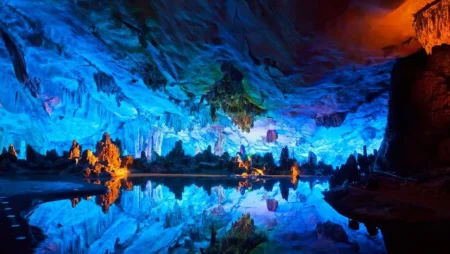





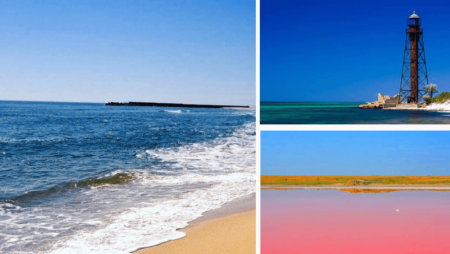

No Comment
You can post first response comment.